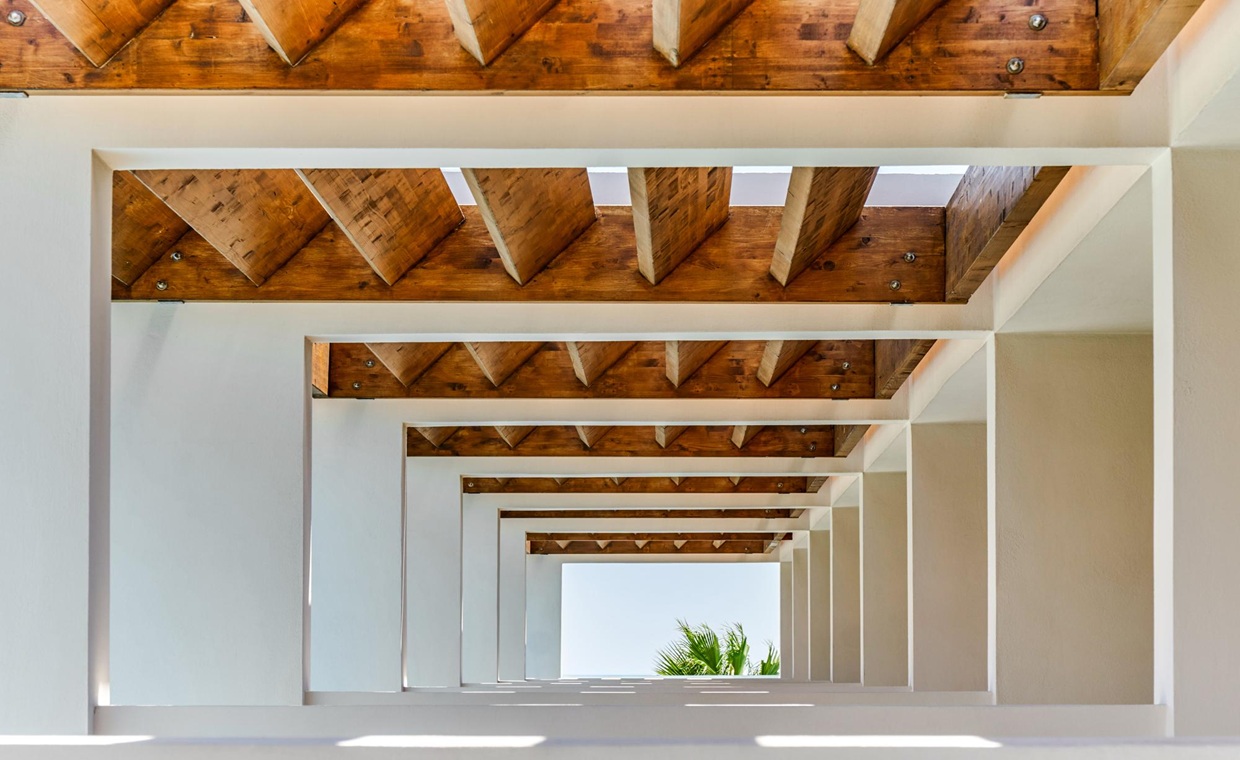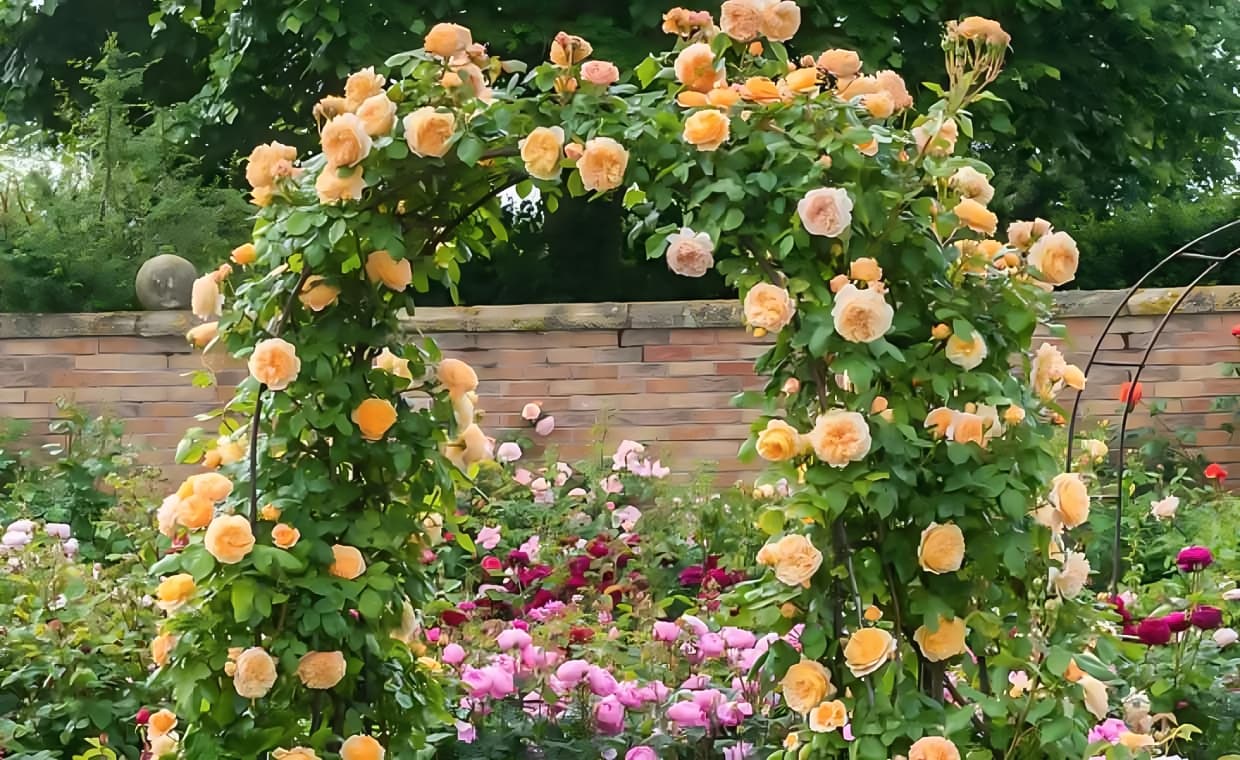
Table of Contents
Roses are showstoppers at ground level. But when those same blooms stretch skyward, the effect is simply otherworldly.
Climbing roses give you all the beauty of traditional varieties with the bonus of height and structure. Because they do not take up any floor space, they are just as useful in a narrow courtyard as they are in a large backyard. You can grow them in places that might otherwise go unused.
Of course, picking the right variety can be a challenge with so many options out there. To make it easy, we’ve rounded up ten of the best climbing roses for Aussie conditions, plus creative ways to show them off in your backyard.
Why Choose Climbing Roses for Your Backyard?
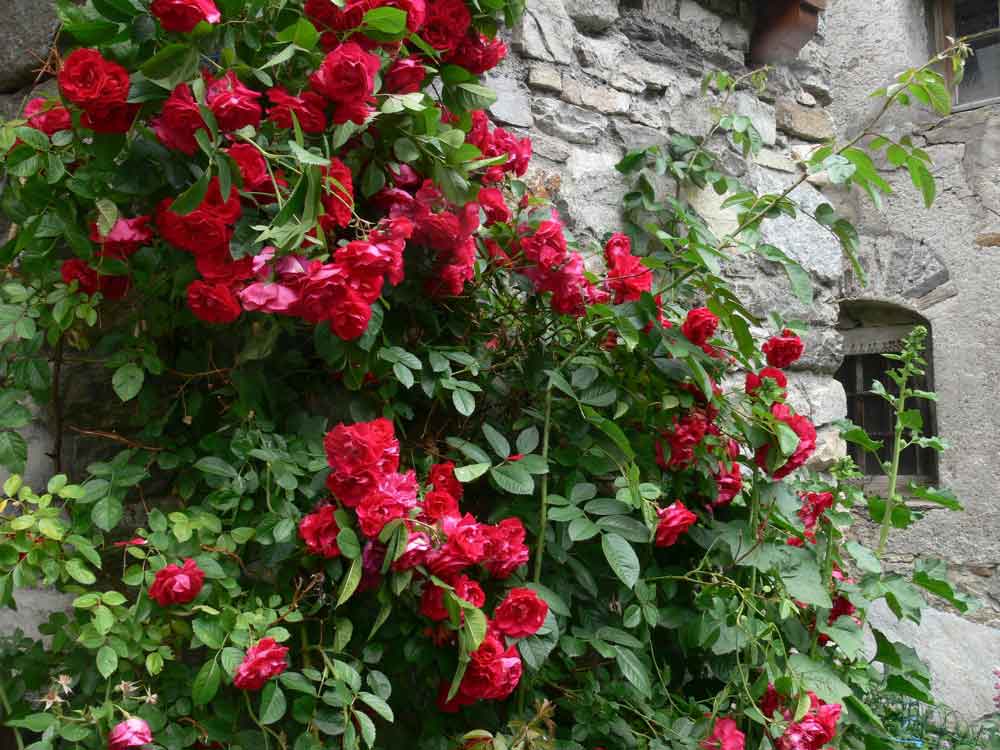
There are plenty of reasons to plant climbing roses. For one, they’re a great way to add vertical interest, something most gardens lack. While other plants stop at the knee, climbers draw the eye upward and add layers to your outdoor space.
They’re also incredibly versatile. You can grow them over a pergola, train them along a fence, or let them drape over an archway. Some will even climb up trees if you let them. Best of all, many climbers flower more than once a year, so you get lasting colour well beyond spring.
Finally, climbing roses lend spaces a softness and romance. You’ll find the right variety for a cottage garden, something clean and modern, or anything in between.
The Top 10 Climbing Roses for Home Gardens
Here are ten climbing roses Australian gardeners love, each with its personality and charm.
1. Don Juan

Don Juan is a classic climbing rose that turns heads as soon as it starts to flower. You’ll spot the deep red, velvety petals from across the yard.
But the scent is what most gardeners mention first. Don Juan has a strong, sweet, old-fashioned rose smell that carries through the garden, especially late in the day. If you like roses that smell like roses, you won’t be disappointed.
Don Juan reaches up to three or four metres. You can train it up an archway, tall trellis, or a sturdy fence for a burst of colour wherever you need it.
To take care of Don Juan, give it a sunny spot with some airflow, water when dry, and cut off spent blooms to help new flowers appear. It doesn’t require much looking after, which is great if you want something reliable and easy to manage.
2. Iceberg Climber
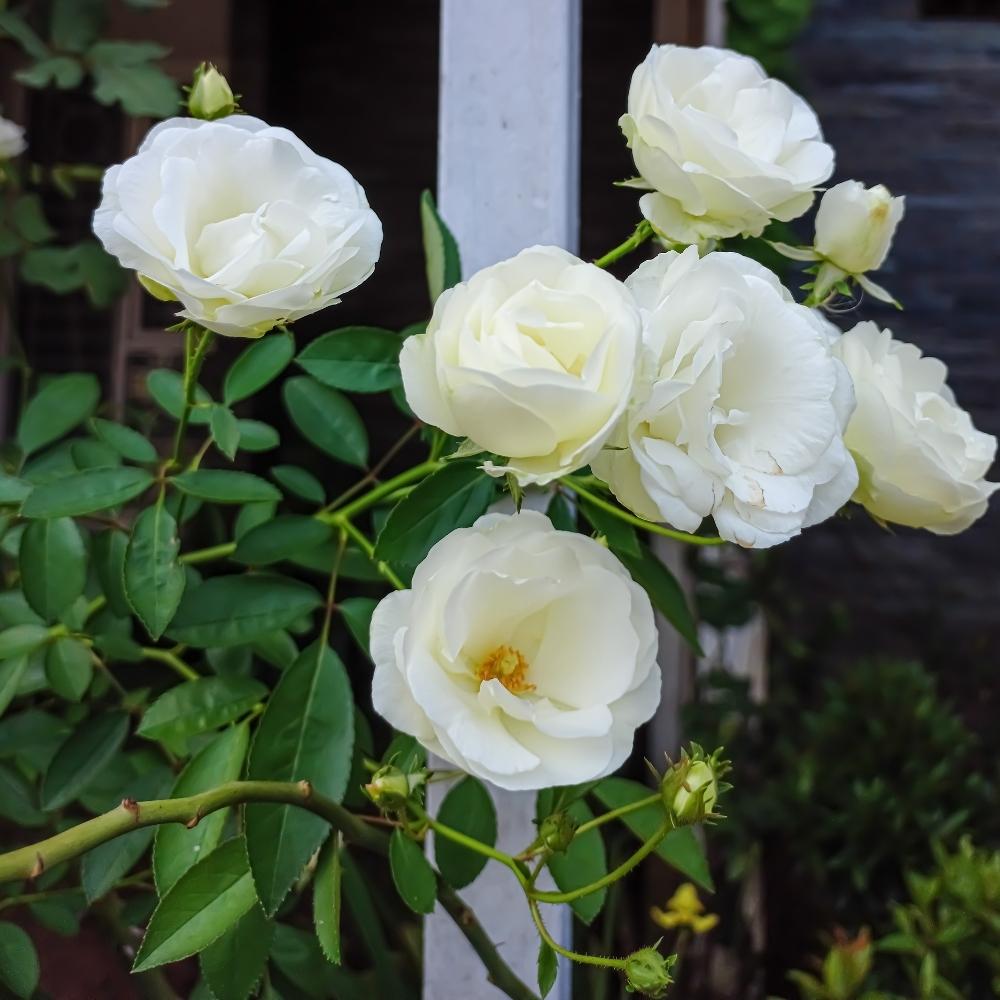
Iceberg Climber is one of the most popular climbing roses around. The blooms are crisp white, clean-looking, and semi-double in form. Because they come through in big numbers, the plant often looks like it’s covered in snow from a distance.
The scent is very light with a hint of honey. While it won’t fill the whole garden, you’ll catch it if you’re standing nearby.
The climber reaches up to three metres and spreads well over fences, posts, or along a wall. The white blooms look their best against a dark fence or brick.
Iceberg Climber is easy to care for once established. It’s happy in part shade, but regular pruning will keep it neat and flowering well. A feed in spring, water during dry spells, and trimming off old blooms keep this rose looking its best all season.
3. Claire Austin
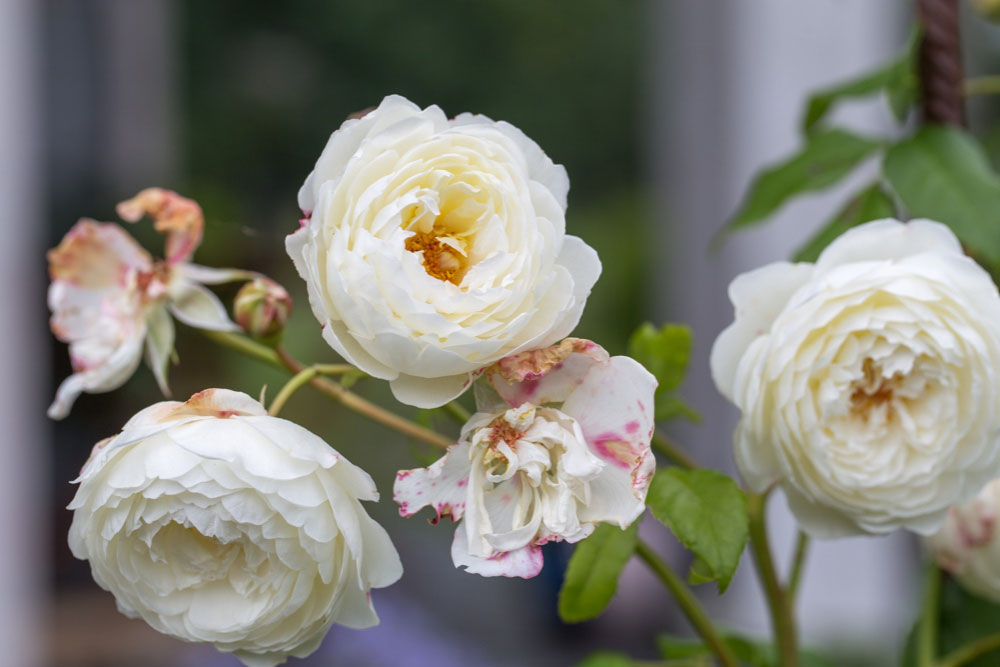
Creamy white petals with a strong myrrh fragrance? Oh my.
We’ve never walked past a trellis covered in Claire Austin roses without doing a double-take or stopping for a second sniff. The flowers open slowly and tend to cluster, so even with fewer blooms, the plant still looks full and generous.
Claire Austin grows to about 2.5 metres. You can train it up a small arch or let it sprawl as a freestanding shrub. It’s a great fit for a romantic garden style, but also works well in neat, structured layouts.
As for care, you only need to feed it in the early season and again after its first big bloom. Water the soil when it starts to dry out, and prune lightly.
4. A Shropshire Lad
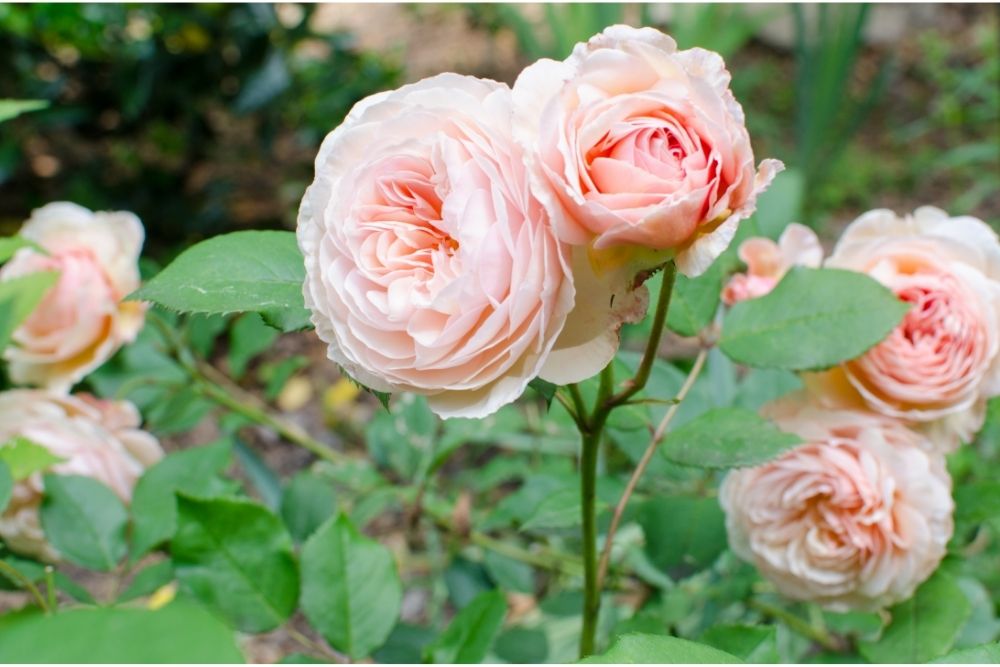
Named after a collection of poems, A Shropshire Lad is indeed poetry in rose form. With soft, peachy-pink blooms and a fruity-tea fragrance, it’s the kind of flower you’d want in a spot that gets plenty of sun.
The shrub grows up to about 2.5 to 3 metres and has an arching habit, so it’s easy to train along a fence or spill gently over a low wall. It’s especially nice in cottage-style gardens or anywhere you want some softness and movement.
A Shropshire Lad prefers rich, well-drained soil and benefits from a layer of mulch to help hold moisture through the hotter months.
5. Golden Showers
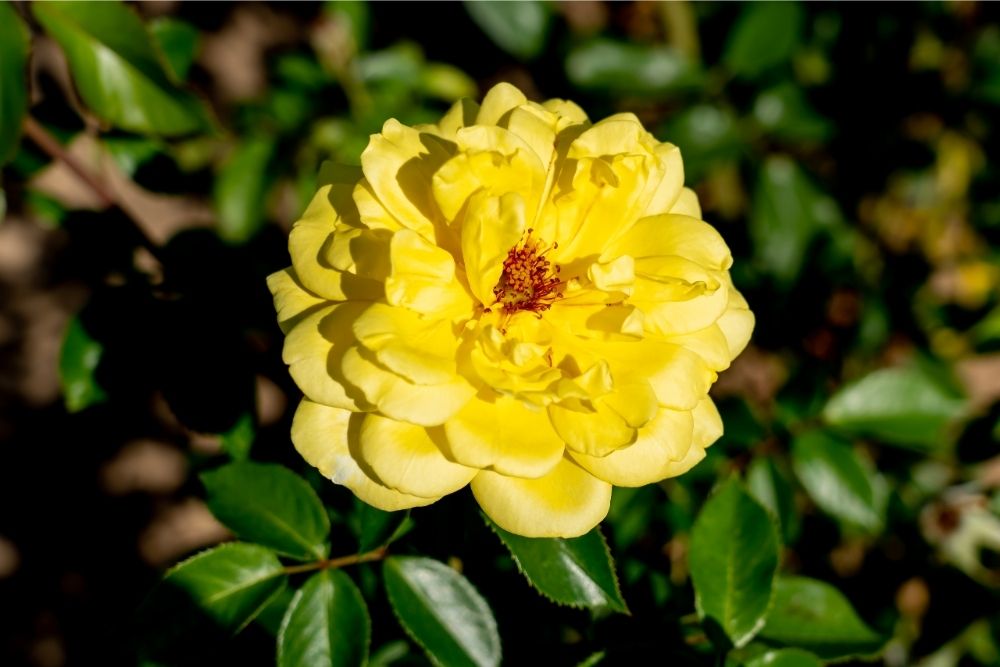
Golden Showers is widely known for its honey-sweet scent and cheerful yellow blooms. It’s a repeat bloomer, too, which means you’ll get flowers from spring into autumn.
If you’ve got a spot that’s a bit taller or in need of some brightness, Golden Showers is a great pick. It climbs up to around 3.5 metres and looks great trained over a tall fence, shed wall, or archway. We like planting it in full sun where it can catch the light and glow.
One of the best things about this rose is how easy it is to care for. It handles heat and humidity better than many other varieties.
6. Dublin Bay

When you think of a blood-red rose, you think of Dublin Bay. It’s bold, velvety, and stands out straight away. The petals don’t smell like much, just a mild, fruity scent, but their appearance more than makes up for it.
The shrub grows in a neat, upright shape and has a habit of staying compact, which makes it a good pick for narrow spaces. Train it up a post, pillar, or grow it in a large pot if you’re short on space.
Dublin Bay is known for being hardy and disease-resistant. With some basic care, it’ll reward you with a long, steady bloom season.
7. Altissimo
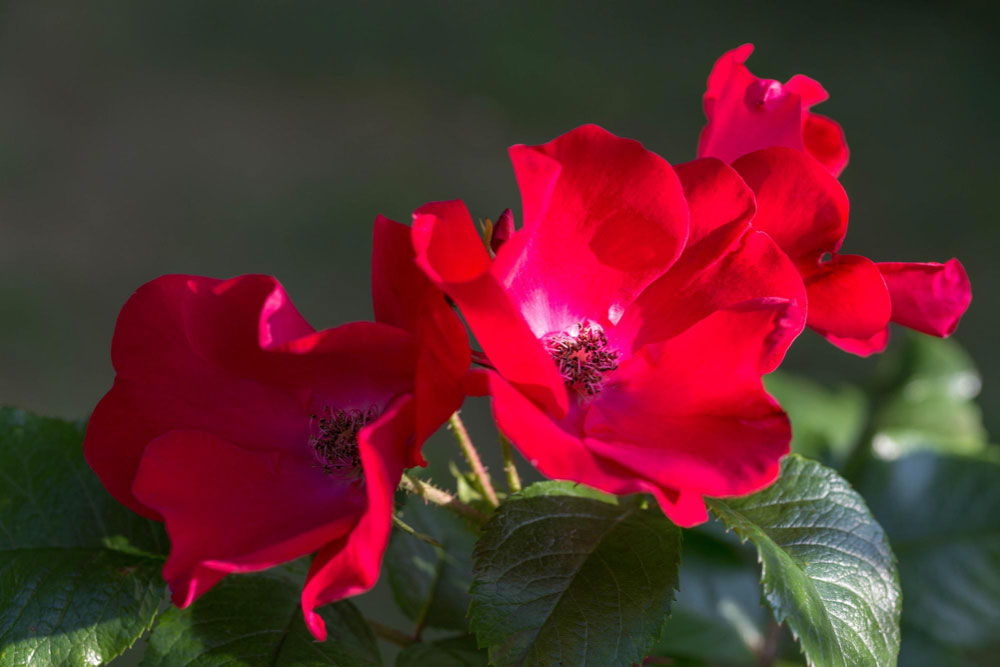
Altissimo is a velvety red, upright climber with big, single-petaled blooms around 4 to 5 inches across, finished off with golden yellow stamens in the middle. It’s not your usual ruffled rose, and that’s exactly what makes it so striking.
Fragrance isn’t what Altissimo is about. Most people grow it for its colour and shape. It looks especially sharp climbing in front of a light background, where the bright red can catch the eye.
Altissimo can reach up to 4 metres and has a habit of filling out if you let it. It can get a bit bushy over time, so a light prune here and there helps keep it neat. Also, it handles light shade fine, but like most roses, it’ll bloom better with some sun.
8. Madam Alfred Carrière
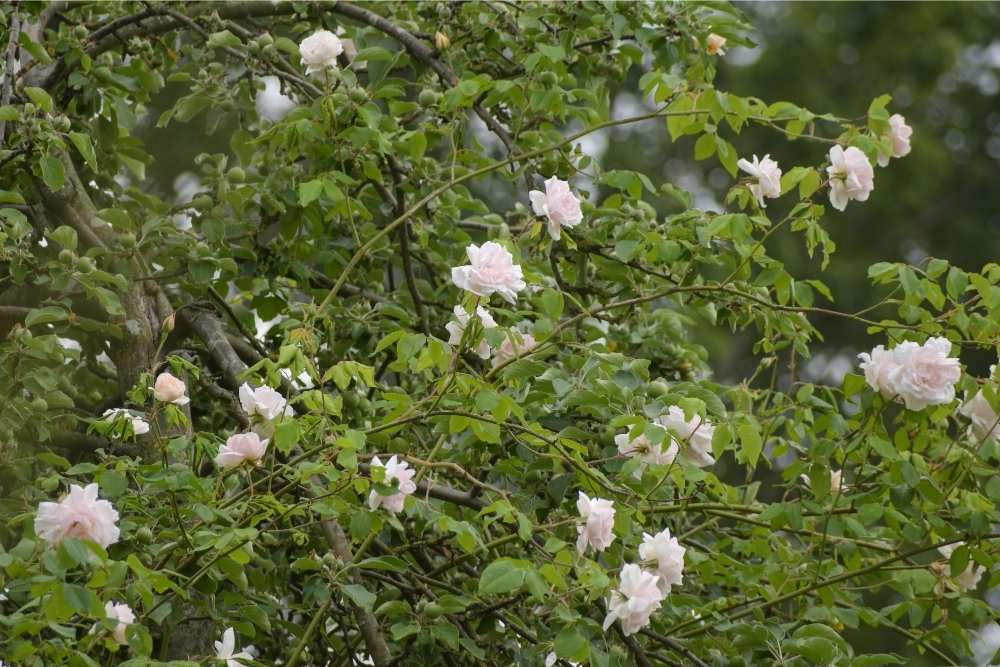
Just like its name, Madam Alfred Carrière is exotic. As one of the toughest Noisette roses you can grow, it tolerates drought, different soil types, and puts up with shade better than most climbers. The blooms are large, cupped, and open in a creamy white with a soft pink blush.
The fragrance is strong and spicy, with a scent that carries well through the yard. It’s one of those roses you’ll notice before you even spot the flowers, especially on warm days.
To say Madam Alfred Carrière doesn’t do it justice. Madame Alfred Carrière can shoot up to 4.5 metres and fills in quickly. If you have a bare wall, the side of a shed, or a big fence that needs covering, this rose will do it with no trouble. It also works well as a natural screen if you’re after more privacy.
9. New Dawn
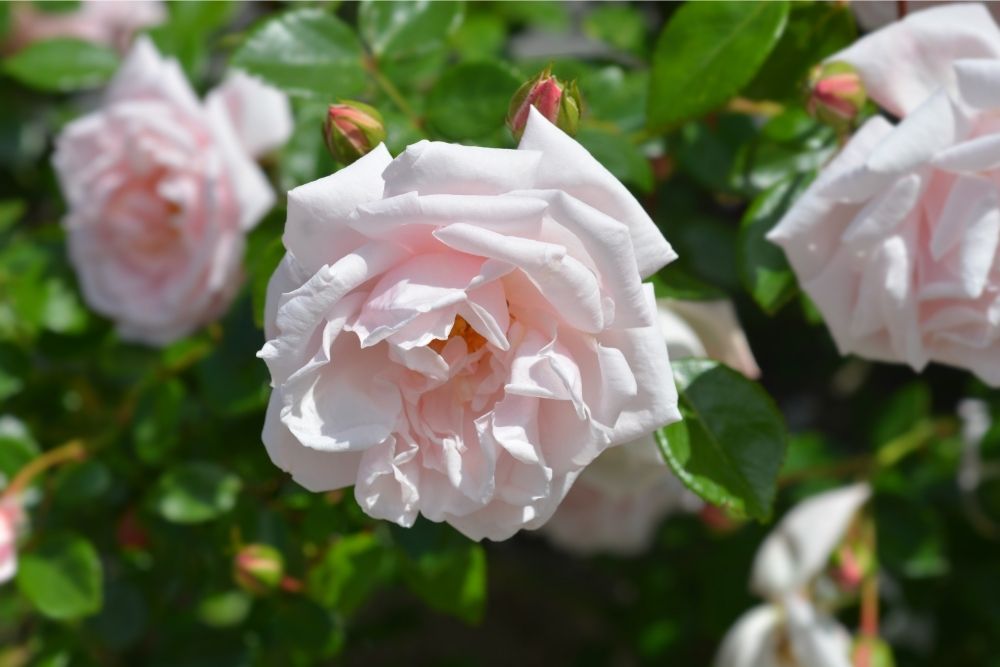
Called the ‘forerunner of the modern perpetual flowering climbers’, New Dawn produces clusters of medium-sized, silvery, soft pink flowers that deepen toward the centre and have a fresh, sweet fragrance.
The rose grows up to 4 metres and sends out strong, arching canes that are easy to train. It doesn’t take long to cover an arbour, pergola, or fence. Once it’s established, New Dawn puts on repeat flushes of flowers through the warmer months.
New Dawn is known for being tough and reliable. It handles Aussie conditions with no trouble and responds well to shaping and support.
10. Pierre de Ronsard

In 2006, Pierre de Ronsard was named the ‘World’s Favourite Rose’ and inducted into the Rose Hall of Fame: the highest honour a rose can receive. That alone should give you an idea of just how well-loved it is and why it continues to show up in gardens across the globe.
There’s no mistaking this rose. The creamy white petals are edged with soft pink, and they look like they’ve been painted by hand. They open slowly, with an apple-like fragrance that adds another layer of intrigue.
With a growth of up to 3 metres and thick, sturdy stems, Pierre de Ronsard is more suited to structured spaces like formal garden beds, arched entrances, or neat fences. You can also have it near a seating area to appreciate the flowers up close.
Design Ideas for Climbing Roses
If you want to get the most out of your climbing roses, you need to think beyond the fence. Let’s go over a few simple but striking ideas.
- Over an Archway: Frame a path or garden gate with two climbers, one on either side. It’s a great way to create a sense of arrival.
- On a Pergola: Let the canes spread across a pergola for dappled shade and colour overhead.
- Against a Wall: Break up a blank brick or weatherboard wall with a climbing rose. Try pairing with a contrasting colour for extra pop.
- With Companion Plants: Underplant your climbing roses with lavender, catmint, or salvia for added colour and scent at the base.
- As a Screen: Train your roses along a wire or a trellis to create privacy between garden zones or hide less-than-lovely views.
If you want your climbing rose to attract more attention, consider what’s behind or around it. For pale or white roses, plant against a darker fence or brick wall to make the colour pop. Deep reds or bright yellows look stunning against lighter backdrops.
You can also choose companion plants that bloom at different times or in contrasting shades, like purple lavender under a soft yellow climber. These contrasts help draw the eye and keep the garden fresh as the seasons change.
General Care Tips for Climbing Roses
Although climbing roses aren’t high-maintenance, they do need a bit of regular care to keep them looking their best.
- Training: Tie new canes in a horizontal position to encourage more flowering shoots. A basic wire or trellis setup is usually enough.
- Pruning: Cut back old or weak stems and shape the rest to suit your space. Late winter is the best time to do this.
- Feeding: Use a rose-specific fertiliser in early spring, then again after the first flush of flowers, and once more in summer if needed.
- Watering: Keep the soil moist, especially during the first year. Deep watering is better than short, frequent sprinkling.
- Mulching: A good layer of mulch around the base keeps moisture in and weeds out. Reapply in late spring and again towards the end of summer.
Final Takeaway
If your garden’s feeling flat or like it’s missing something, a climbing rose might be exactly what it needs. The ten varieties we’ve covered are all reliable, heavy bloomers that bring colour, height, and character to any space. Choose one (or a few), give them regular care, and let them do what they do best.
Also Read: Choosing the Right Flowers for your Garden | Flowering Plants
Author Bio

Sean comes from a long line of rose growers, with the family’s passion for roses stretching back generations. As the head of Penfield Gardens Rose Nursery, he combines hands-on experience with deep-rooted knowledge to help Australian gardeners choose, plant, and care for beautiful, healthy roses.

























